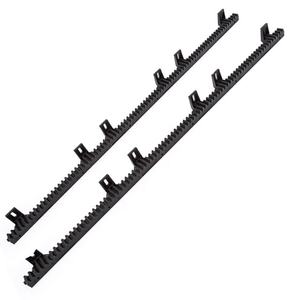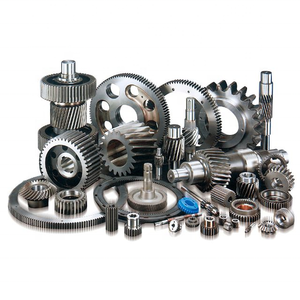Lubricating the gearbox in an Airsoft Electric Gun (AEG) is a critical maintenance procedure directly impacting performance, efficiency, noise levels, and longevity. As mechanical engineers, we approach this task with a focus on material compatibility, tribology principles, and optimal function. Improper lubrication is a primary failure mode for these systems. Here’s the professional methodology.
(how do you lubricate a aeg gearbox)
Lubricant Selection: The choice of lubricant is paramount. Avoid WD-40, general-purpose oils, or silicone sprays; these are unsuitable. A high-quality, lithium complex-based grease is generally recommended. Key selection criteria include:
Viscosity & NLGI Grade: Medium viscosity (NLGI Grade 1 or 2) provides adequate film strength for the moderate loads and speeds encountered without excessive drag or churning losses.
Base Oil: Synthetic base oils (PAO or ester) offer superior thermal stability, oxidation resistance, and low-temperature performance compared to mineral oils.
Thickener: Lithium complex thickeners provide good water resistance and mechanical stability.
Additives: Anti-wear (AW) and Extreme Pressure (EP) additives are essential to protect gear teeth under shock loading common in AEG cycling. Crucially, the formulation must be plastic-safe. Many AEG components (pistons, piston heads, bushings, tappet plates, nozzle) are polymer-based. Lubricants containing petroleum distillates, certain esters, or aggressive EP additives (like high Sulphur-Phosphorus compounds) can cause stress cracking, swelling, or embrittlement in common plastics like ABS, POM (Delrin), or Nylon. Silicone grease is acceptable only for lubricating cylinder head O-rings and air seal points; it lacks the necessary load-carrying capacity for gears and metal-on-metal sliding contacts. Verify manufacturer specifications for plastic compatibility.
Preparation & Cleaning: Effective lubrication requires a clean substrate. Prior to applying new lubricant, thoroughly degrease and clean all gearbox components. Use a dedicated plastic-safe degreaser or isopropyl alcohol. Remove all old lubricant, debris, metal shavings (from wear), and dirt from gears, bushings, bearings, the cylinder, piston rails, spring guide, and trigger contacts. Ensure components are completely dry before re-lubrication. Contamination drastically accelerates wear.
Application Method: Apply lubricant judiciously and precisely. For gears (bevel, spur, sector), apply a thin, even film to the gear teeth flanks. Focus on the meshing areas and root fillets. Avoid filling the entire tooth space. Apply a small amount to the gear shafts where they interface with bushings or bearings. For the piston assembly, apply a light coating along the piston rails on the gearbox shell. Lubricate the spring guide where it contacts the piston head interior and the gearbox rear. For the cylinder, a minimal amount applied to the exterior surface aids smooth reciprocation within the gearbox shell. For the anti-reversal latch and trigger mechanism contact points, apply a very small amount specifically formulated for electrical contacts or use a dedicated dielectric grease sparingly to prevent carbon buildup and arcing. Use applicators like cotton swabs or small brushes for control. The goal is a sufficient film, not excess.
Quantity Control: Over-lubrication is detrimental. Excess grease increases viscous drag, causing motor strain, reduced efficiency, slower cycle times, and higher operating temperatures. It also acts as a dirt trap, accelerating abrasive wear. Hydraulic lock, where trapped grease prevents the piston from moving freely, can occur. Apply lubricant sparingly. A pea-sized amount distributed correctly is often sufficient for the entire gear set. Less is frequently more effective than more.
Maintenance Interval: Lubrication is not permanent. Factors like usage intensity, environmental conditions (dust, moisture), lubricant quality, and operating temperatures degrade the lubricant over time. A general guideline is to inspect and relubricate every 50,000 cycles or annually, whichever comes first. However, monitor performance; increased noise, sluggish cycling, or reduced power output indicate lubricant breakdown or contamination, necessitating earlier service.
Consequences of Neglect/Error: Incorrect lubrication leads directly to premature failure modes: accelerated gear tooth wear (pitting, spalling), bushing/bearing seizure, piston cracking or binding, motor burnout due to overload, air seal degradation causing power loss, and trigger contact failure. Plastic degradation from incompatible lubricants causes catastrophic component failure.
(how do you lubricate a aeg gearbox)
In conclusion, proper AEG gearbox lubrication demands a disciplined engineering approach. Selecting a plastic-safe, synthetic lithium complex grease with appropriate AW/EP additives, meticulous cleaning, precise application of the correct minimal quantity, and adherence to a preventative maintenance schedule are non-negotiable for achieving reliable, high-performance, and durable operation. This systematic procedure is fundamental to preserving the mechanical integrity of the gearbox assembly.


